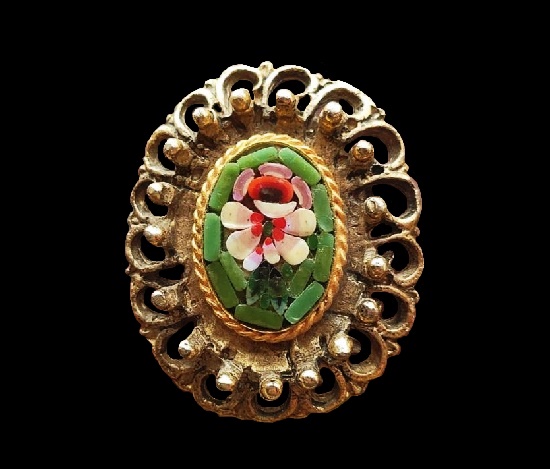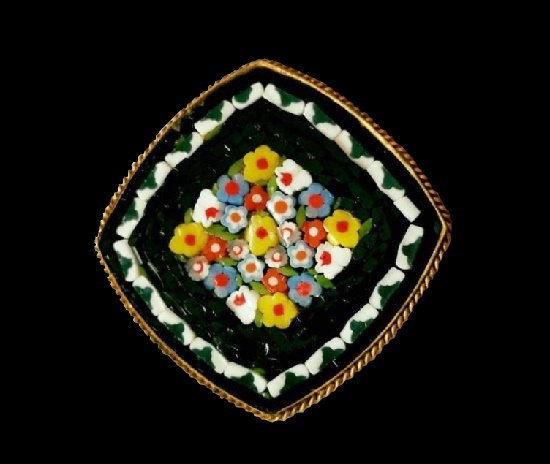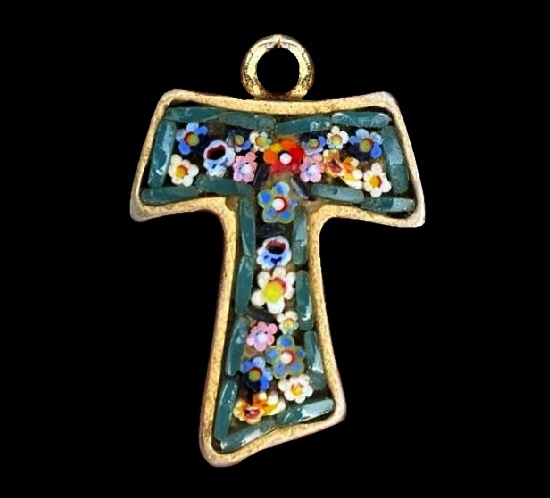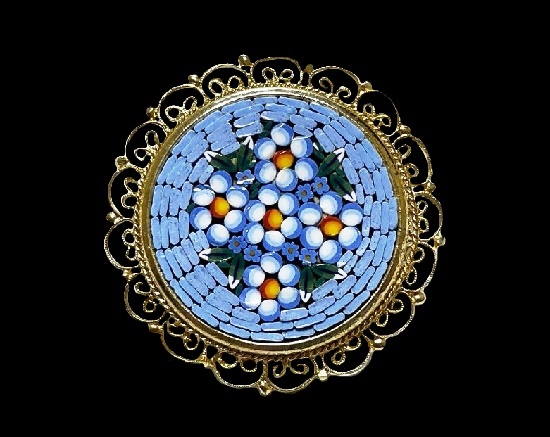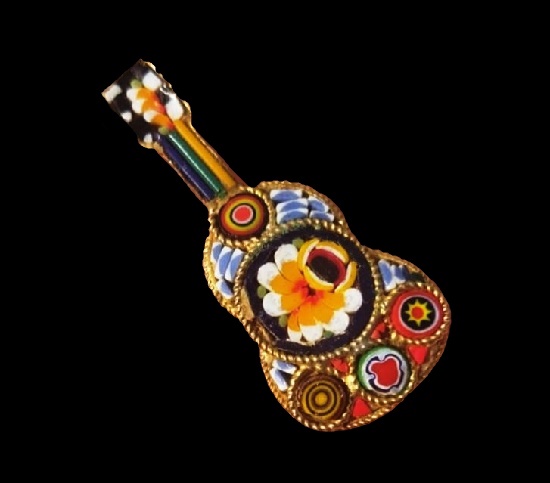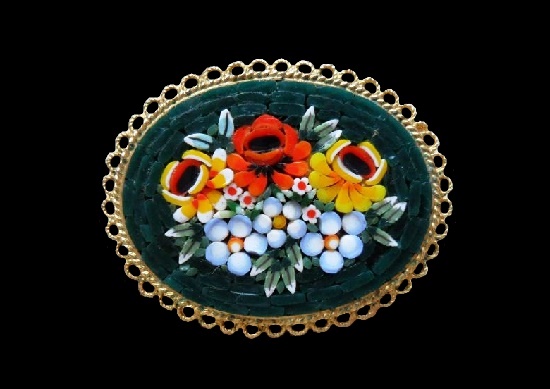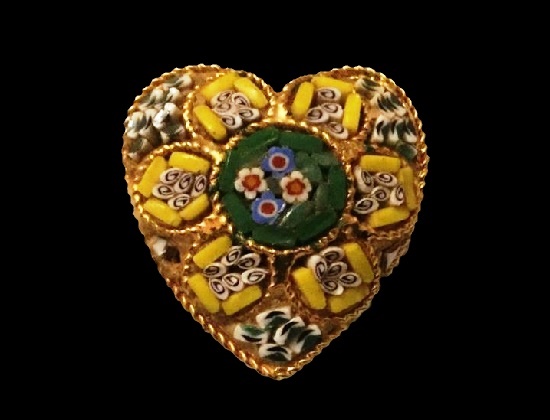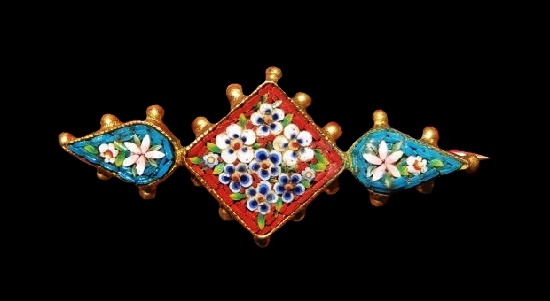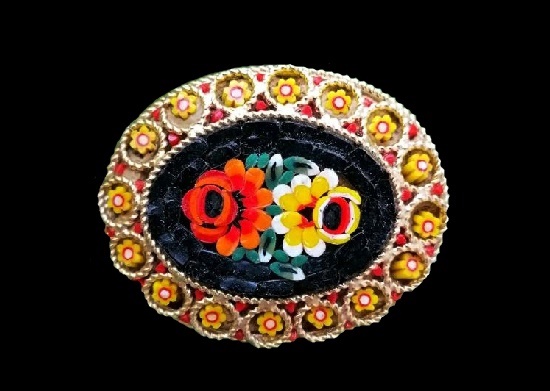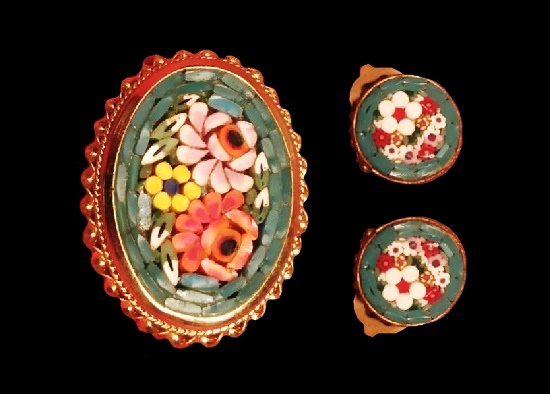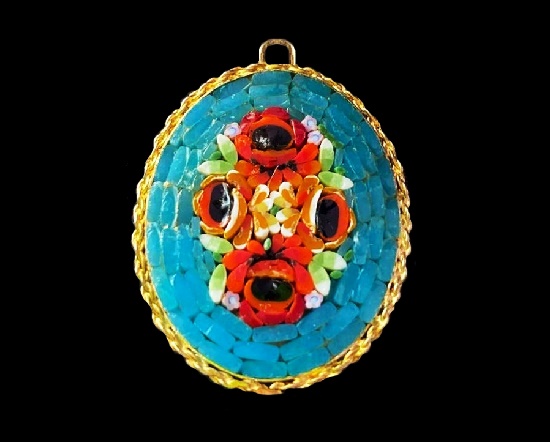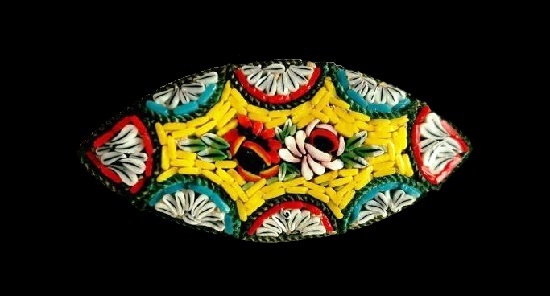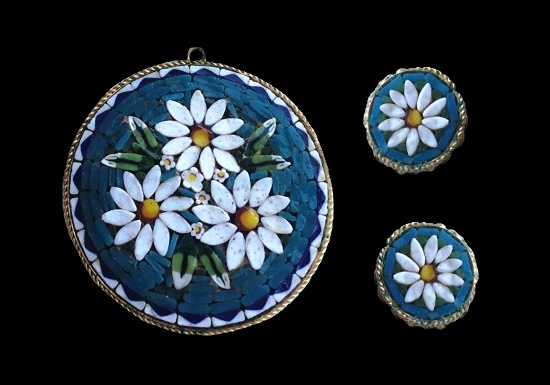Italian micromosaic vintage costume jewelry
Italian micromosaic vintage costume jewelry
The original design, made of tiny pieces of high quality Italian glass or smalt, is a micro mosaic. Widespread in the eighteenth century, micro mosaics reached their greatest peak in popularity during the work of the Vatican Mosaic Workshop.
Mosaic master Giacomo Raffaelli (1753-1836) once invented a silica composition that allowed him to stretch a thread and transform it into miniature bricks. It was from them that he began to make his products, and mainly for the Vatican. Traditionally, the master painted the glass in a special way, and then pulled it into thin straws and cut into millimeter cubes. Then he manually laid out these pieces in a certain mosaic sequence, creating a beautiful multicolor, and usually floral ornament. The basis was important – the special composition of the glue, which, when hardened (within two days), acquires the properties of a stone. Of course, handcrafted micromosaic pieces are almost impossible to repeat.
Noteworthy, there are three main types of Italian micromosaics. In particular, Roman, Venetian and Florentine.
The earliest type is Roman mosaic, which is the use of very small pieces of colored glass (tesserae). These decorations, presented in the form of oval or round brooches, sometimes in the form of guitars, crucifixes or mandolins, are truly works of art.
Venetian design is characterized by the use of various forms of glass tiles, with which the craftsmen made decorations.
In Florentine design, craftsmen used pietra dura (hard, natural stone), which they carved, and then assembled. Besides, they used black marble as the basis, therefore, the background of almost all decorations was black.



